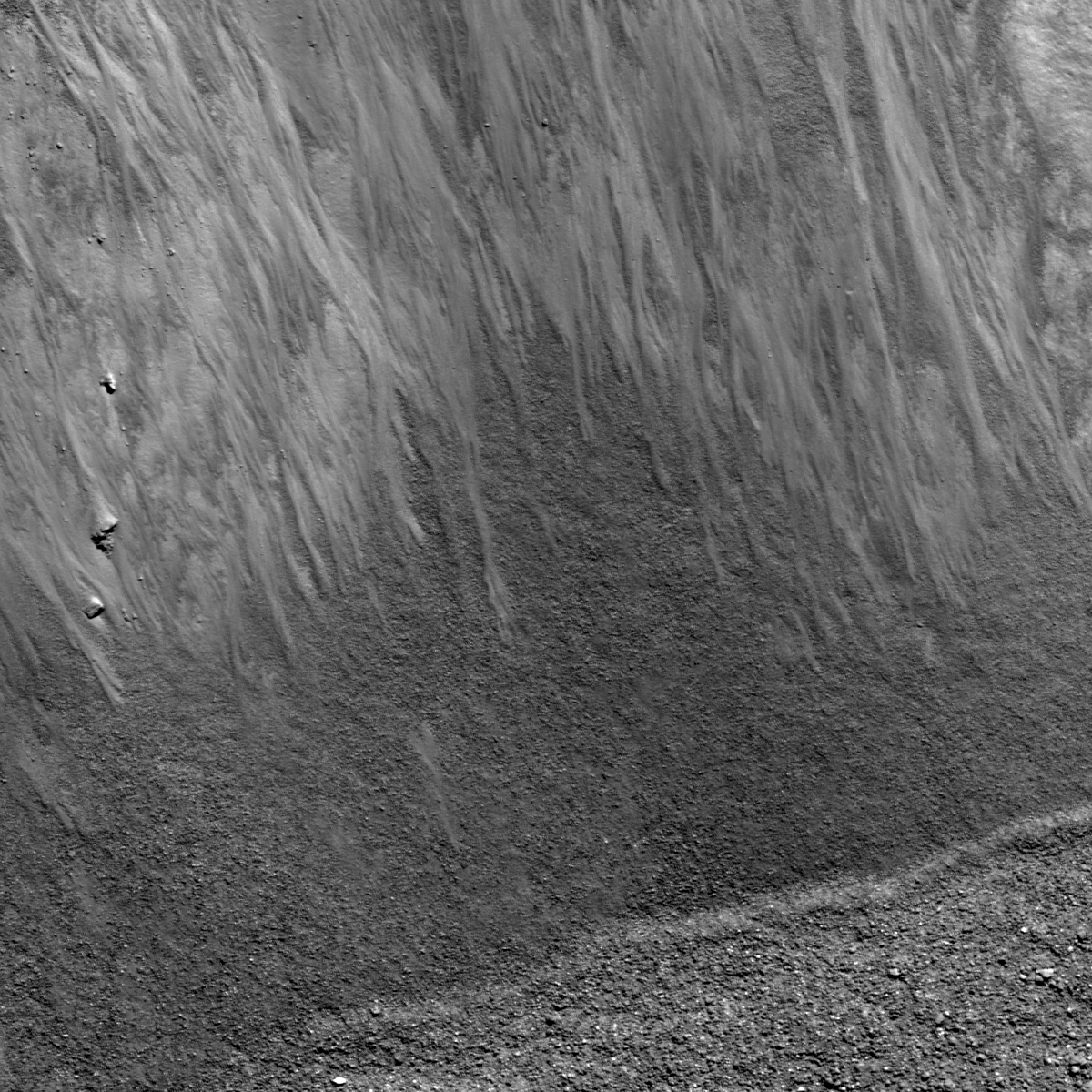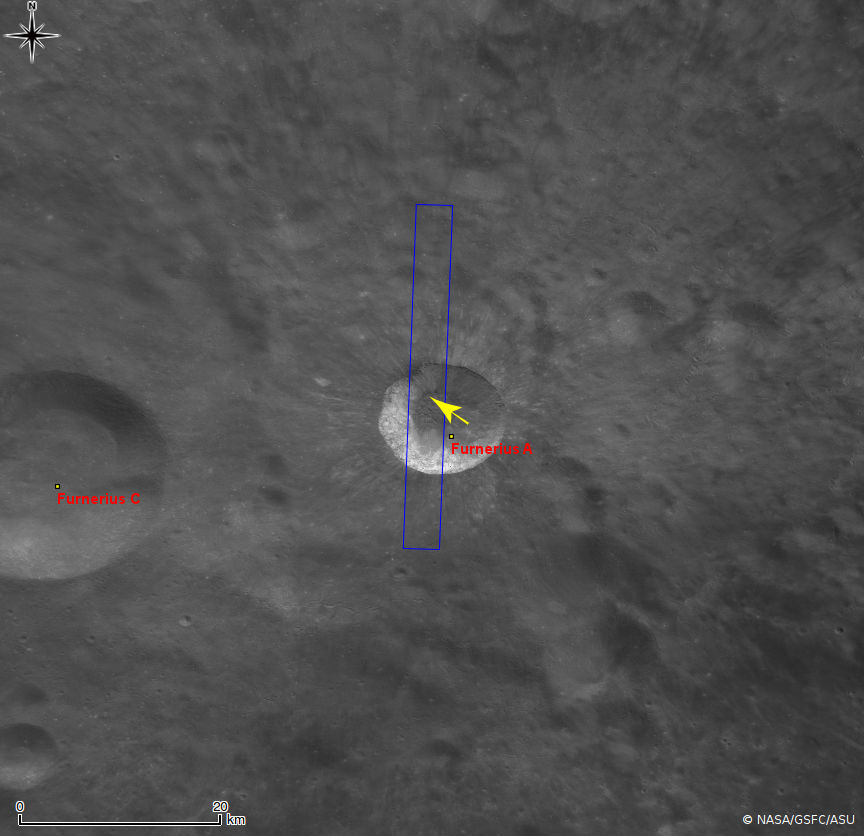
Today's Featured Image highlights granular flows on the northern wall of Furnerius A crater (11.21 km in diameter), located between Mare Fecunditatis and the South Pole-Aitken basin. At the bottom of the image, a diagonal boundary delineates between the coarse blocky crater floor (relatively bright) and the still coarsely textured, but relatively darker surface, which is part of the sloping crater wall. From the top of the image extend a number of relatively bright granular flows. At the end of each flow, the flow lobe is visible against the darker, coarsely textured crater wall. Notice that the sunlight is from the right side, thus each flow unit is positive relief (not negative relief) on the top of preexisted slope.
These granular flow features are commonly observed inside the fresh crater walls on the Moon. Little by little slope failures degrade the steep walls, which enlarge the apparent diameters of the craters, as well as create shallower crater floors. Over long periods of time, small impacts also destroy any sharp relief features, and someday Furnerious A will be transformed into a crater like Furnerious C (left side crater in the image below). Since the Moon's surface has no water or wind weathering (erosion), the Moon is the best natural museum to learn about the long term evolution of crater forms.
Explore the beautiful flow lobes in the full NAC frame yourself!
Related posts:
Detour!, Lunar landslides!, Dark streaks in Diophantus crater, Rock avalanche in Robinson crater
Published by Hiroyuki Sato on 17 May 2012
